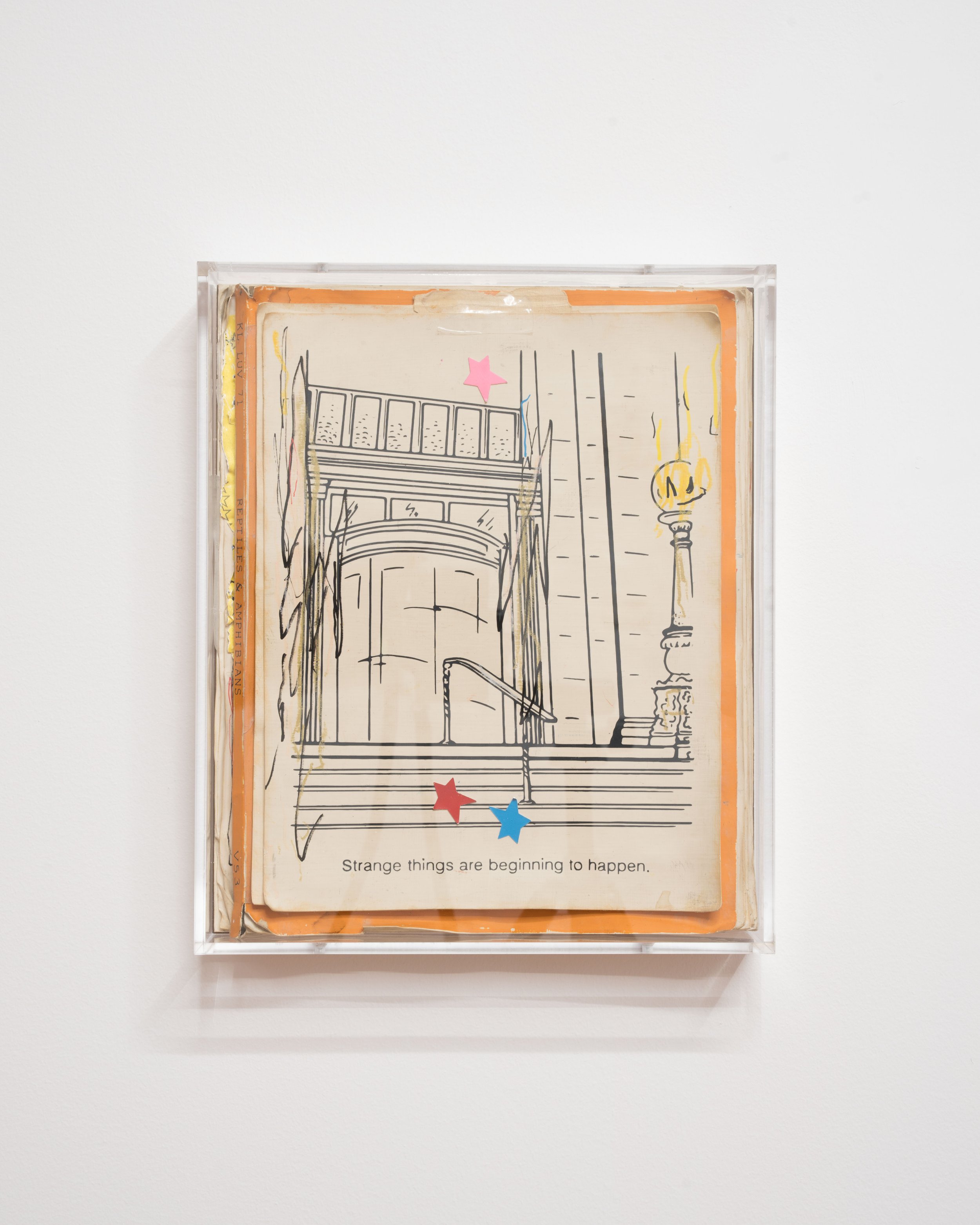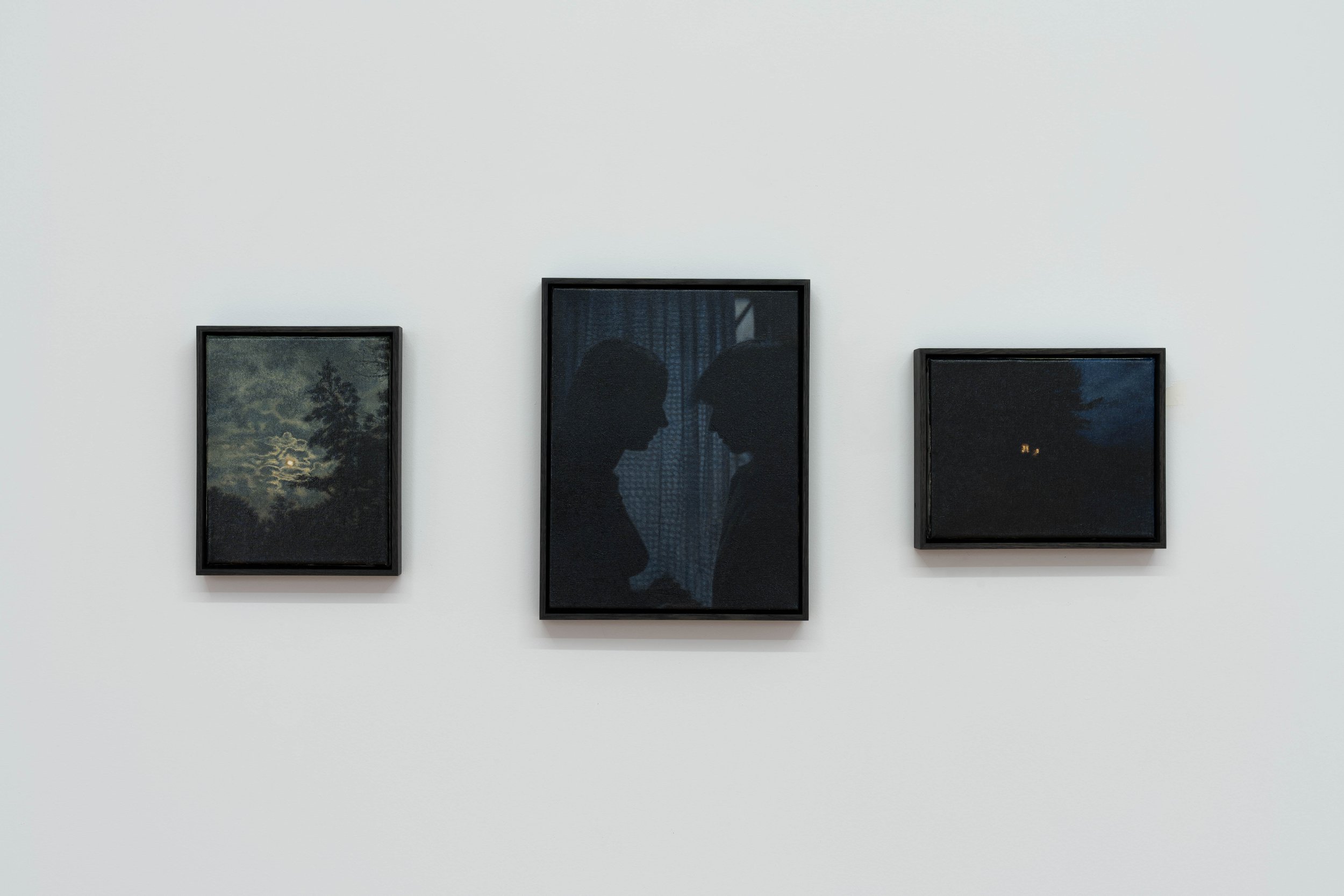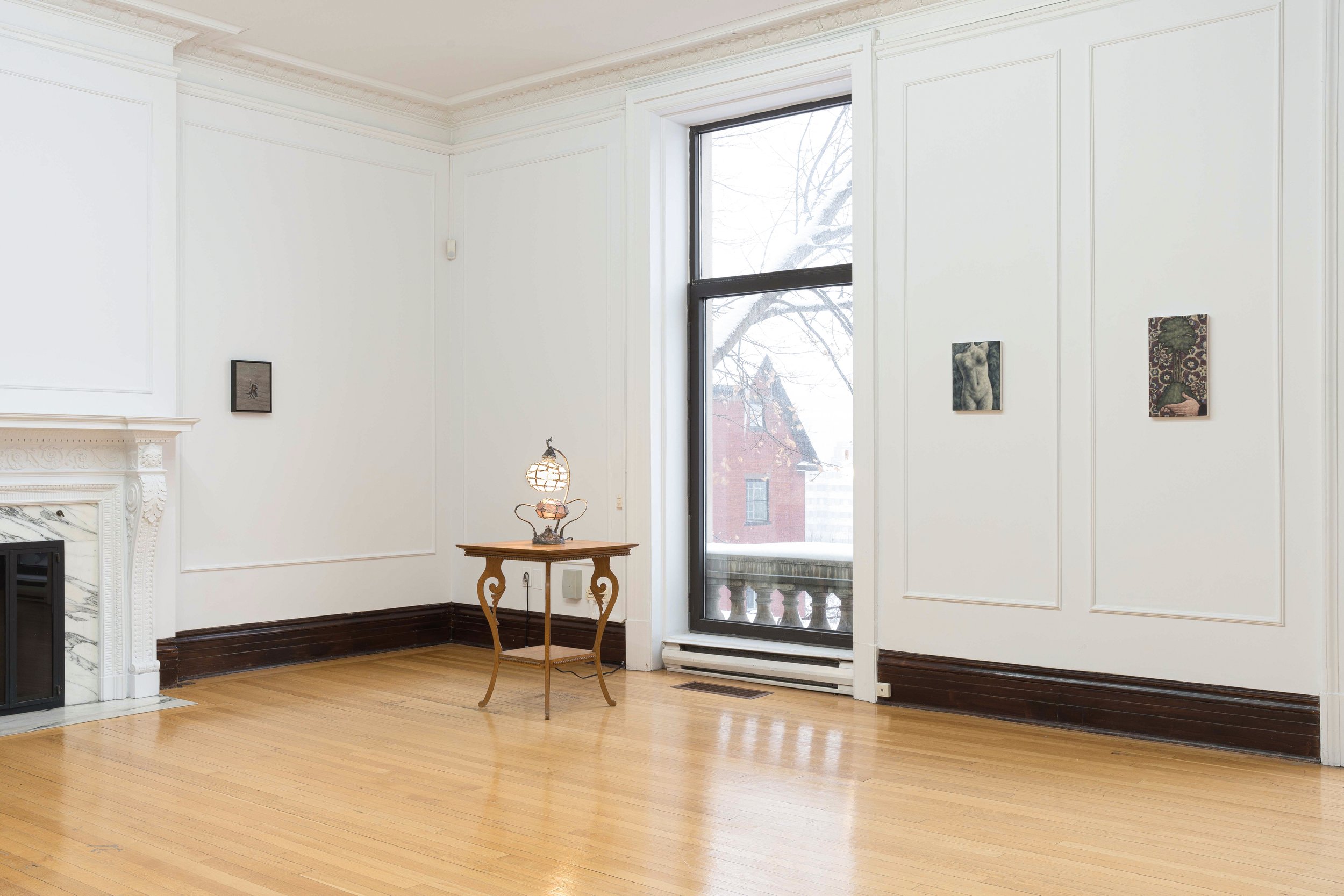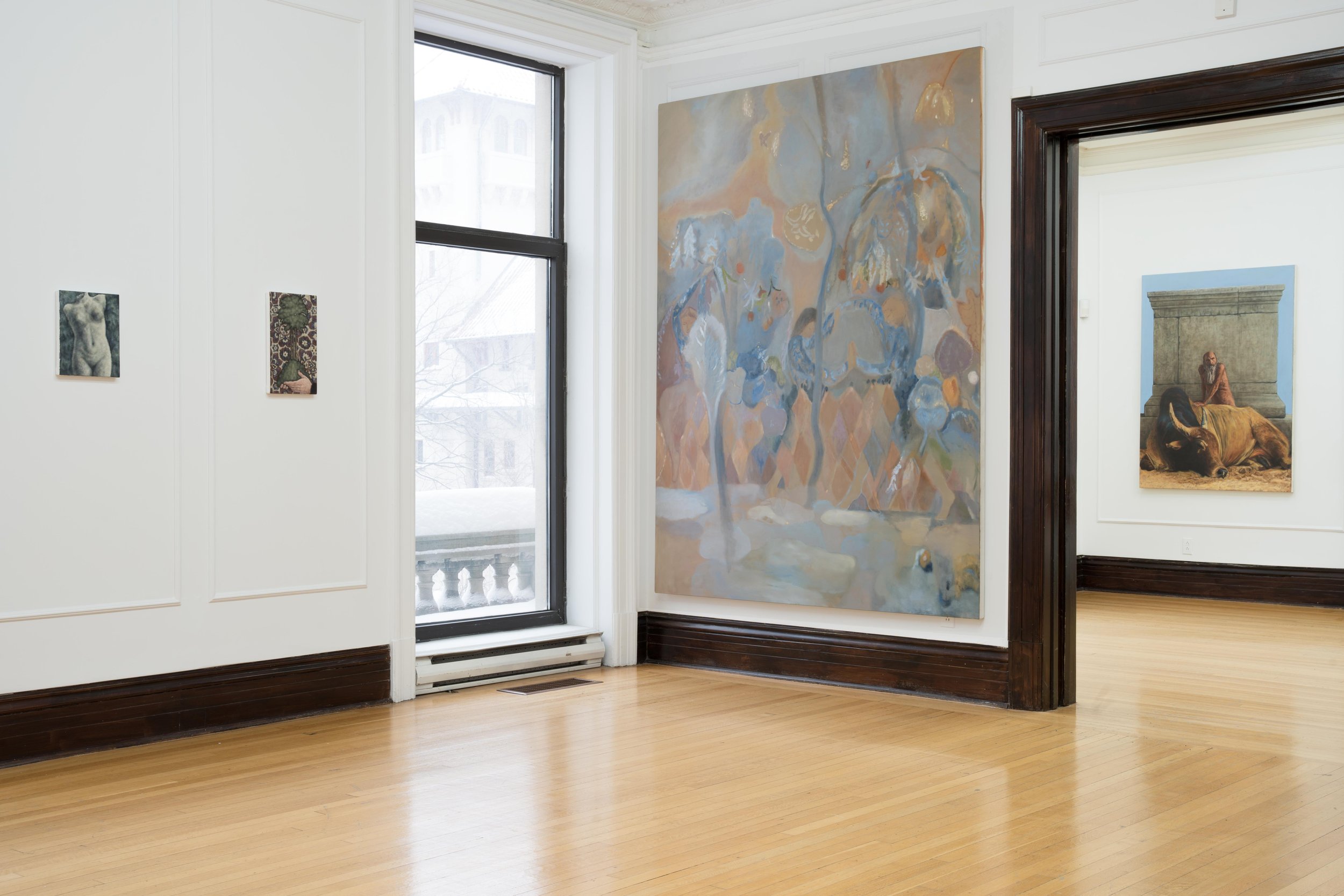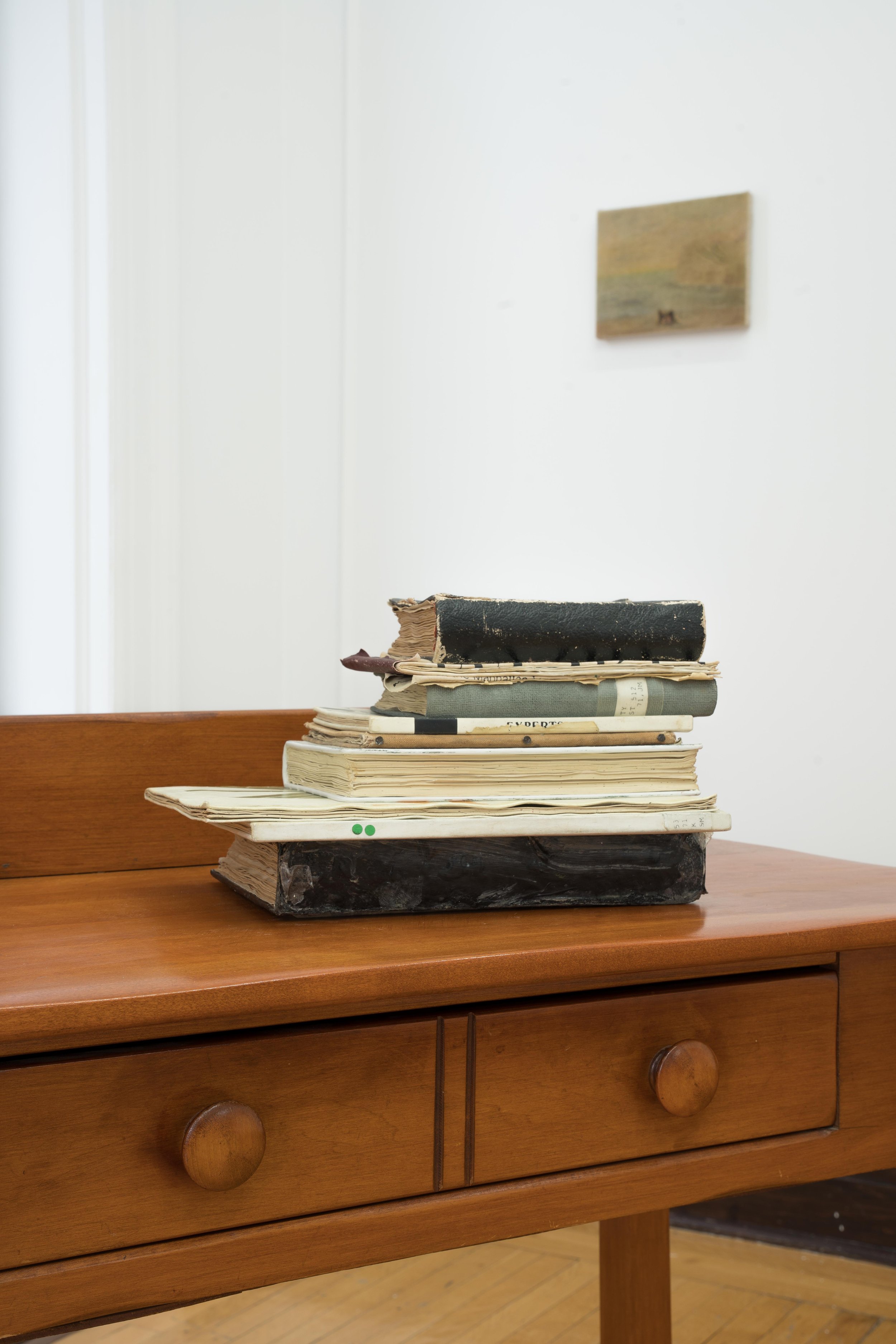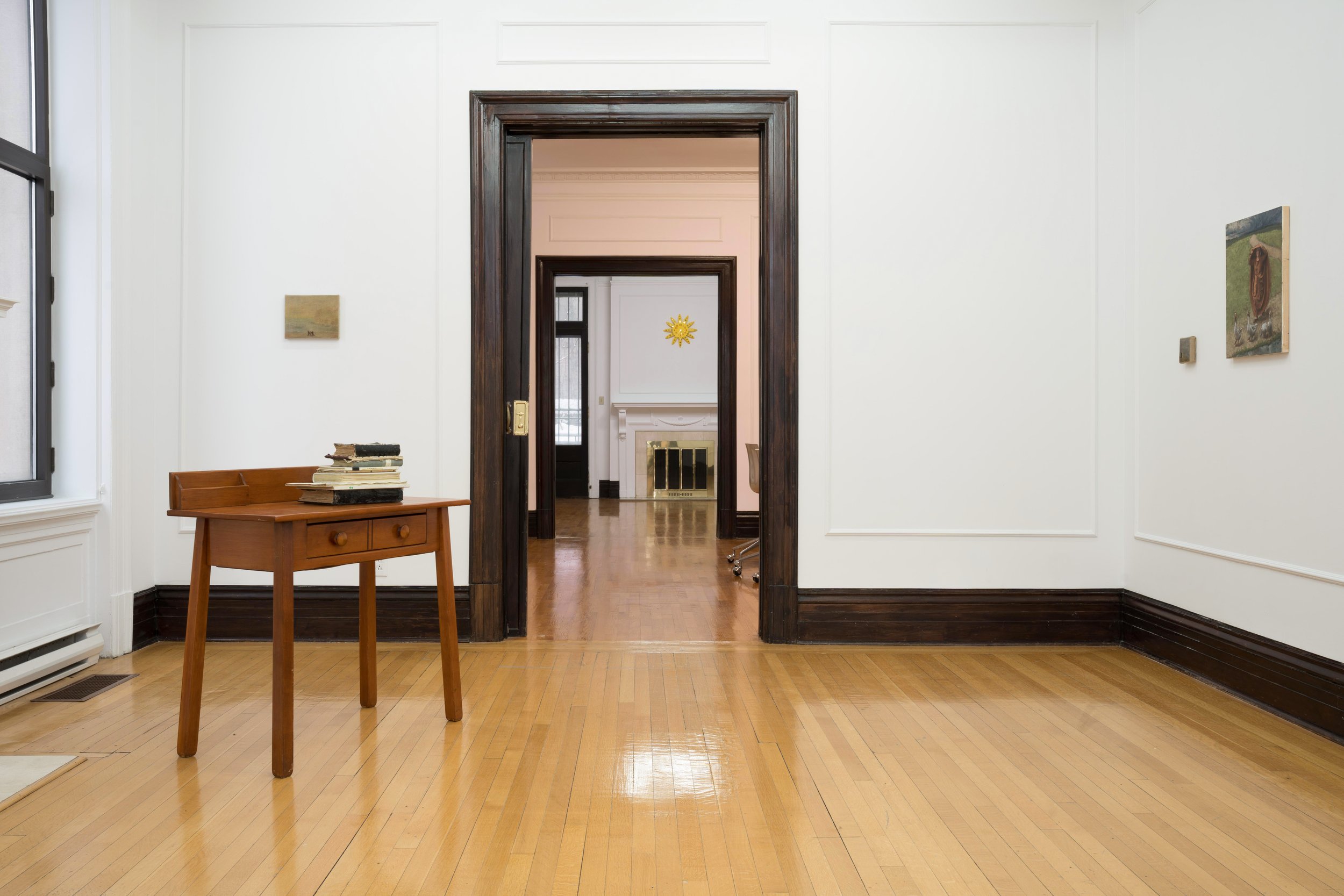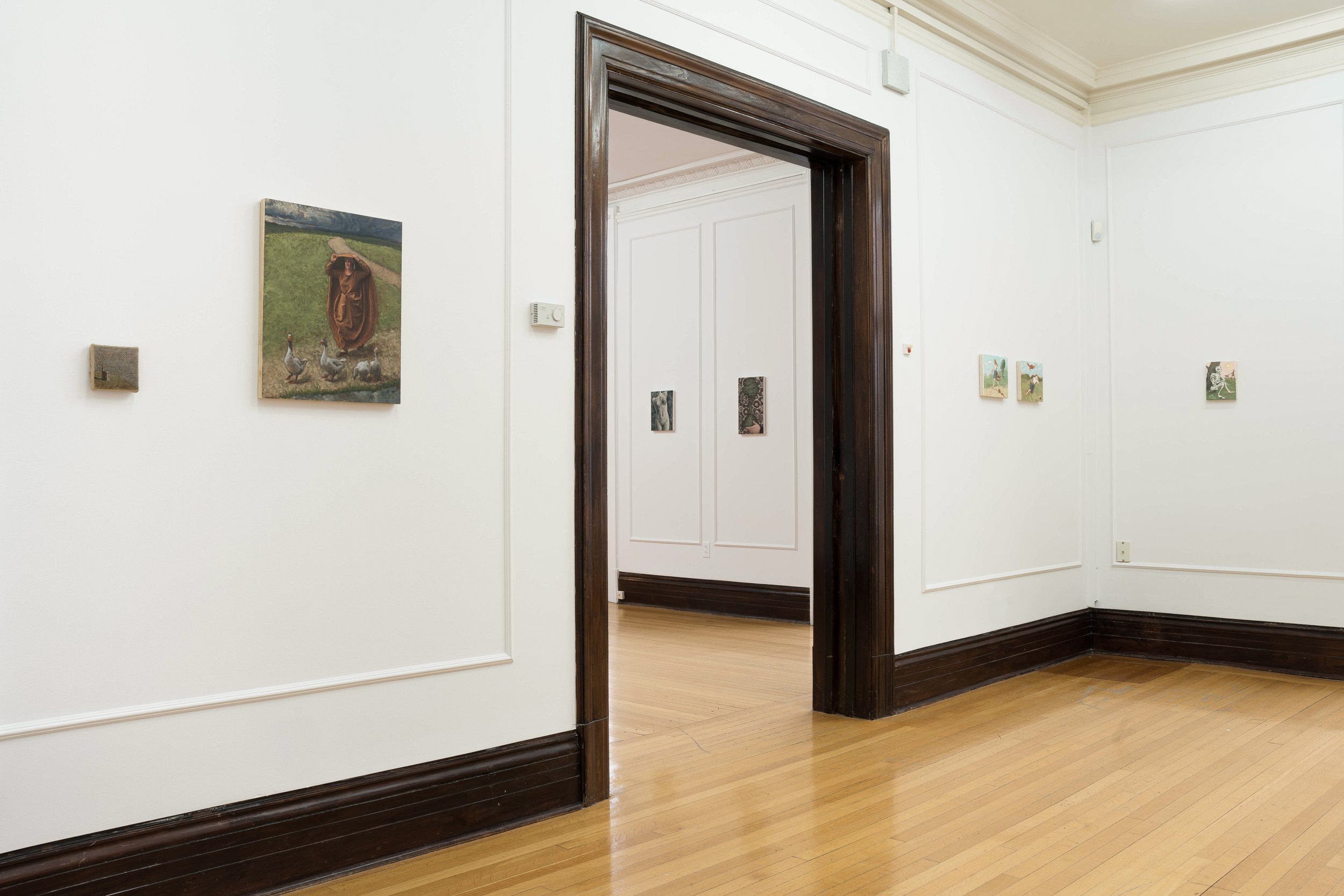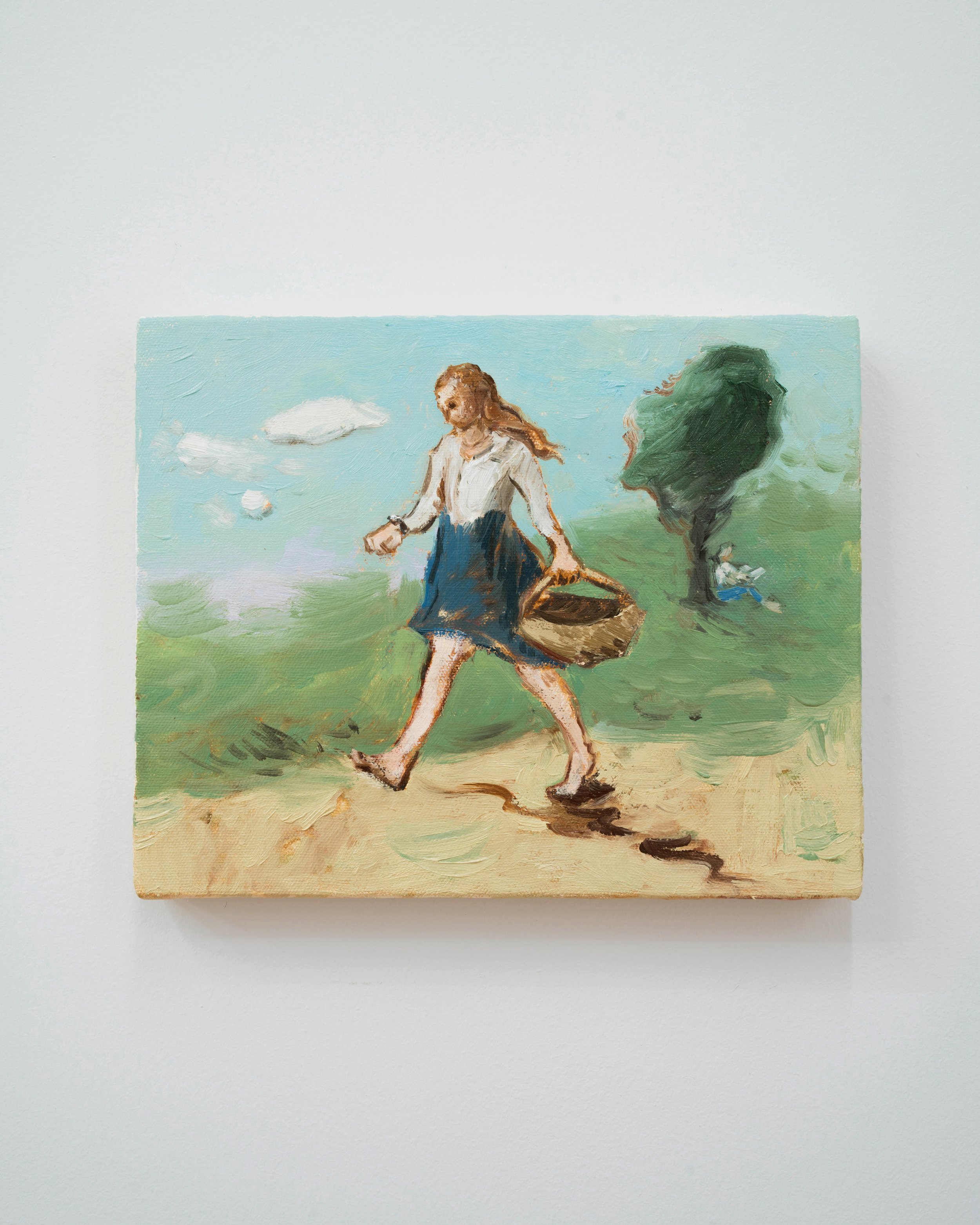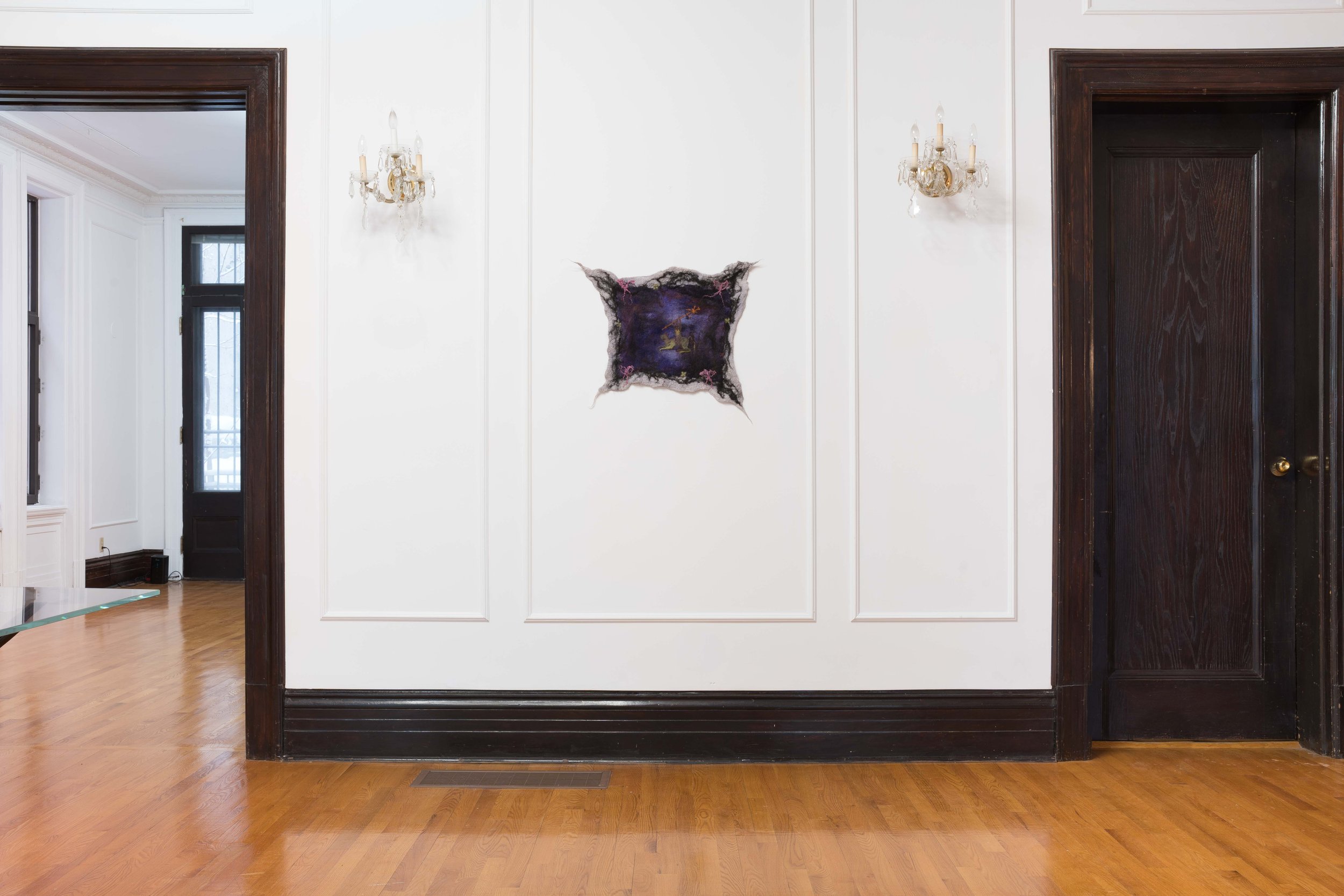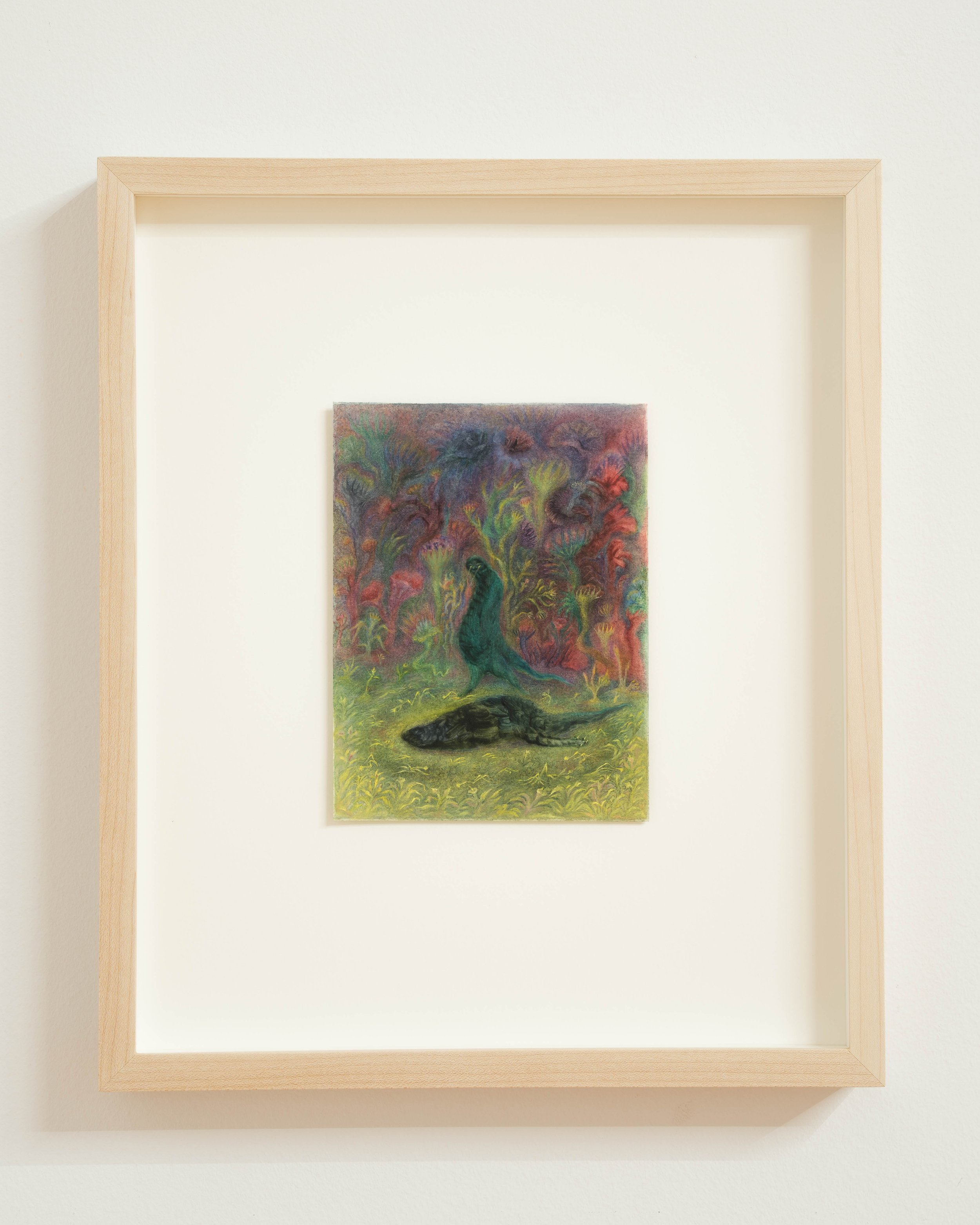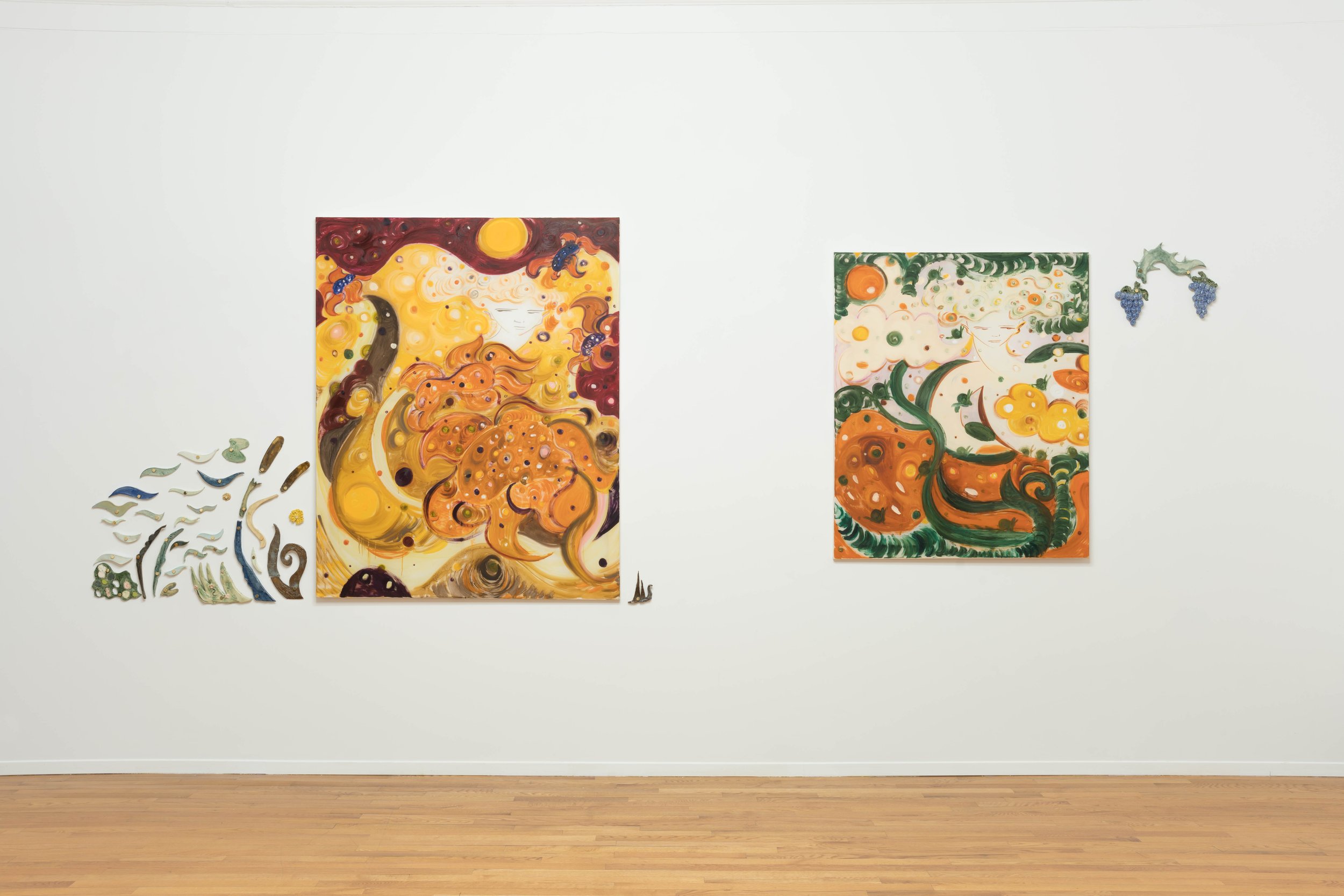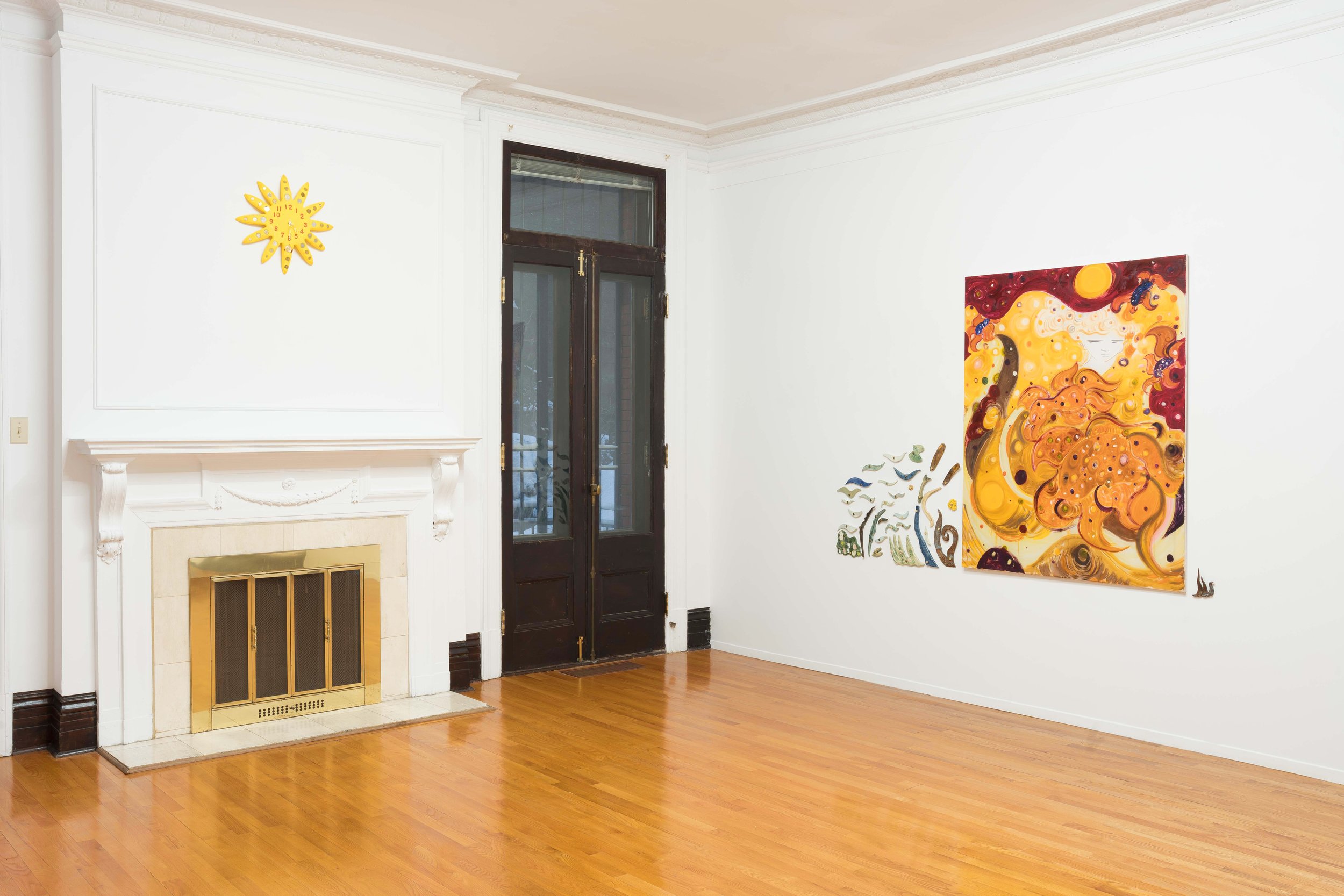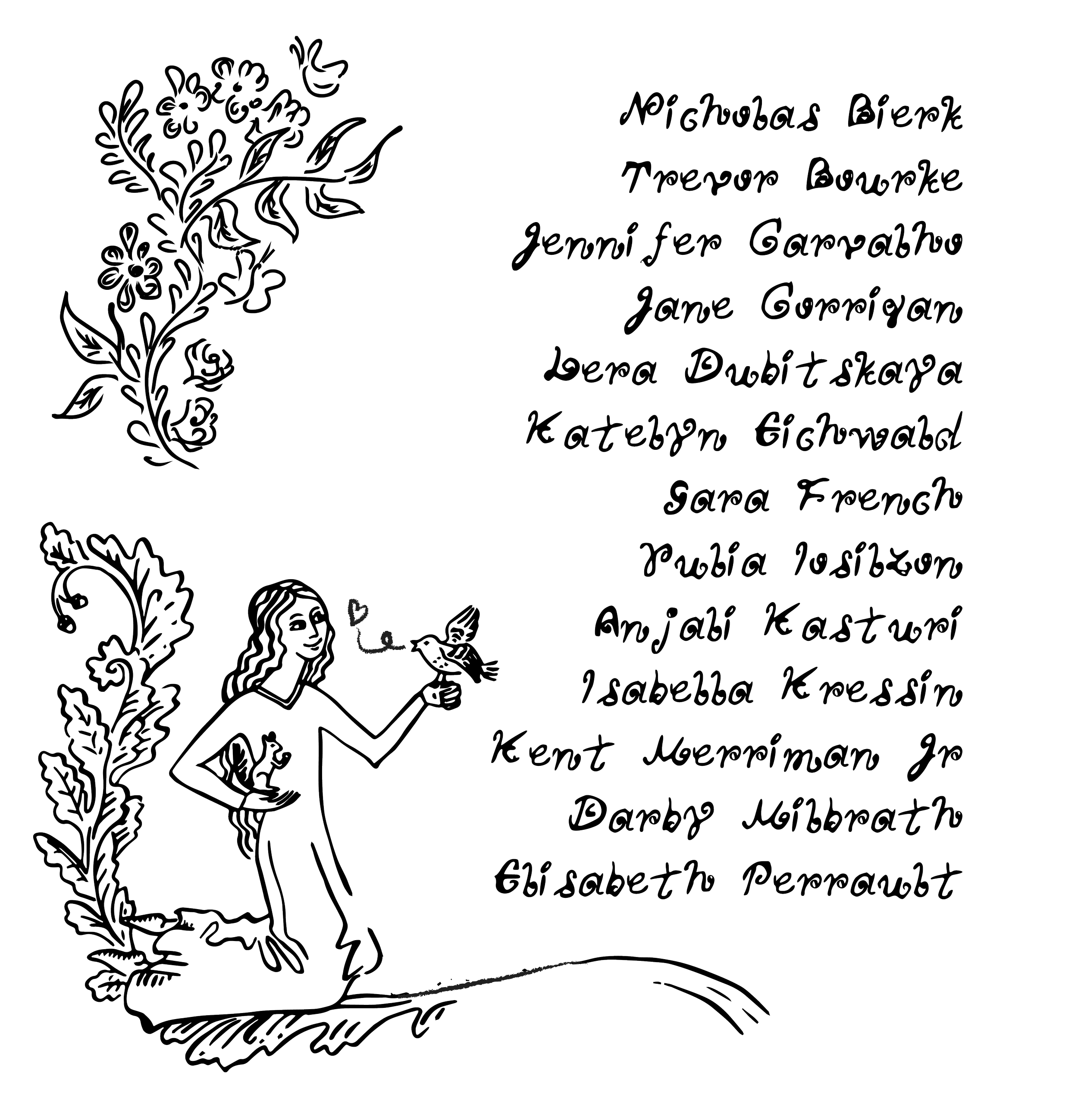
L’heure du conte
Artists: Nicholas Bierk, Trevor Bourke, Jennifer Carvalho, Jane Corrigan, Lera Dubitskaya, Katelyn Eichwald, Sara French, Yulia Iosilzon, Anjali Kasturi, Isabella Kressin, Kent Merriman Jr, Darby Milbrath, and a special presentation by Elisabeth Perrault
Dates: January 21 – March 11, 2023
Opening: January 21, 4–7pm (artists in attendance)
Venue: Pangée, 1305 ave des Pins O., Montreal
-
‘Let’s pretend the glass has gone soft like gauze, so that we can get through. Why, it’s turning into a sort of mist now, I declare! It’ll be easy enough to get through –’ She was up on the chimney-piece while she said this, though she hardly knew how she had got there. And certainly the glass was beginning to melt away, just like a bright silvery mist.
– “Through the Looking Glass,” Lewis Carroll
At the tip of a sea of children (whether sleepy or energetic) sits a storyteller. Often on a small stool, the storyteller holds a piece of fiction in their hands. A magical text that transports children into new dimensions, allowing them to face fears, indulge in their wildest fantasies and meet incredible new characters, all from the safety of the library. With the smell of books, old wood, and musty carpet lingering in the air, children lean in and devour every word of the story.
At the tip of a sea of people (whether nonchalant or enthusiastic) stands an artist. Often the first to arrive, the artist greets and chats with the spectators. The artist has put forth an otherworldly collection of work and watches as people marvel and gawk. Looky-loos lean into their canvases, bend down to inspect their pieces, and trot through their installations. The artist, whether in the spotlight or hiding in the shadows, hopes their work speaks for itself. The feeling of wonder and possibility washes over the spectator, who tries to comprehend the ‘true’ meaning of the work. Truth, however, is often nonsense and the viewer becomes transported back to the library carpet. The work takes on a life of its own and would (if it could) grow legs and spring forth from the floor, ceiling, or walls.
Making sense of such nonsense is not an easy task. Far easier is to let this new and strange entity wash over you, envelope you in its fantastic characters, scenery, array of colours and textures. Like every tale a child hears, sitting on the library carpet, we may let the work stand on its own - asking ourselves where we fit in the piece, not where the piece fits for us. Storytime always teaches us something new, whether it’s a cautionary tale, one of self-acceptance, overcoming battles, or finding love in unexpected places. In the artist's imagination, the work has been growing, morphing, and shifting until the artist's hands get to work. This imagination is everlasting, constantly evolving, and can never quite be explained or made sense of - in a word, the most incredible kind of nonsense.
Text by Madeline Glowicki


